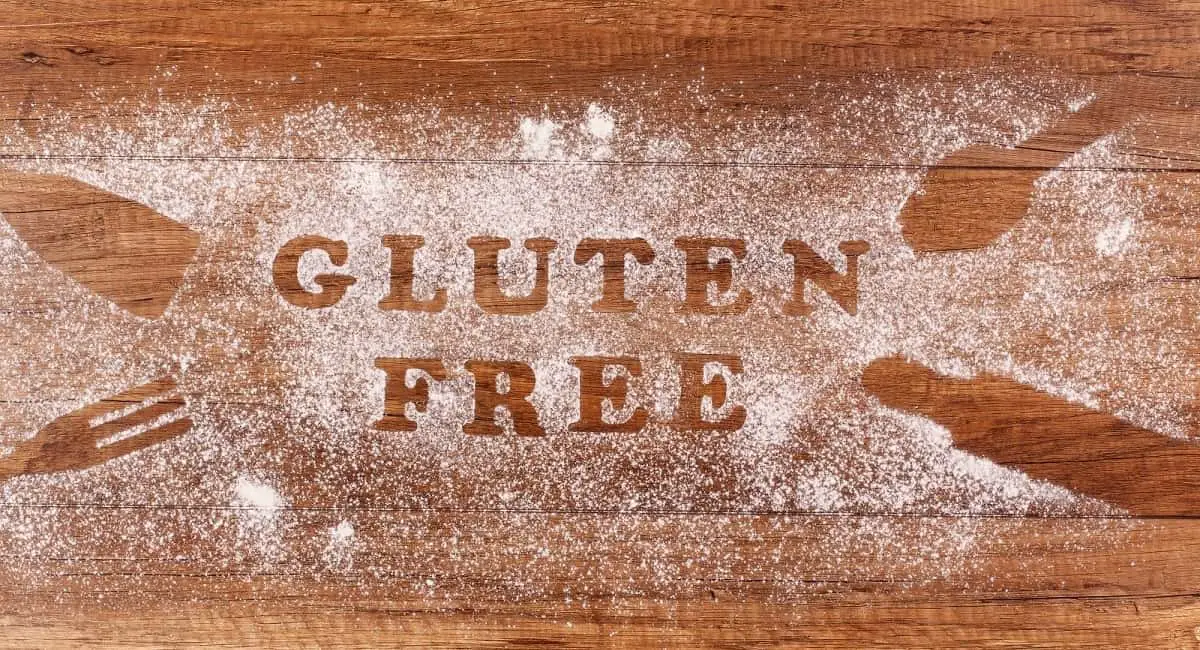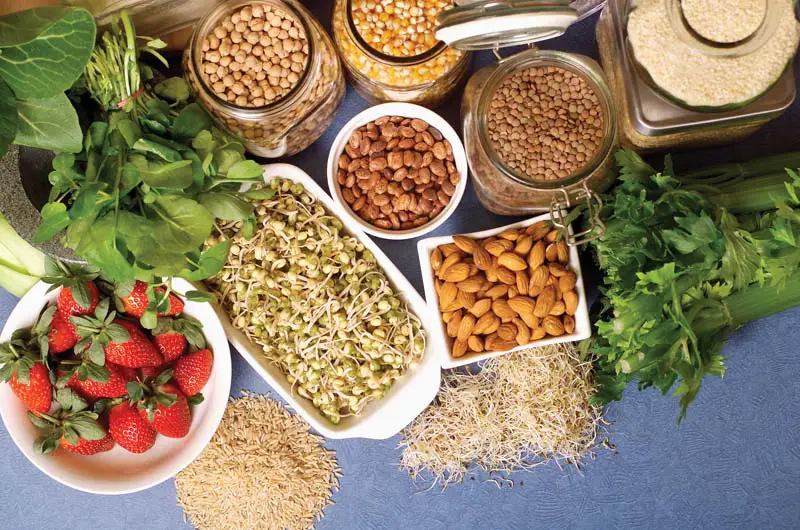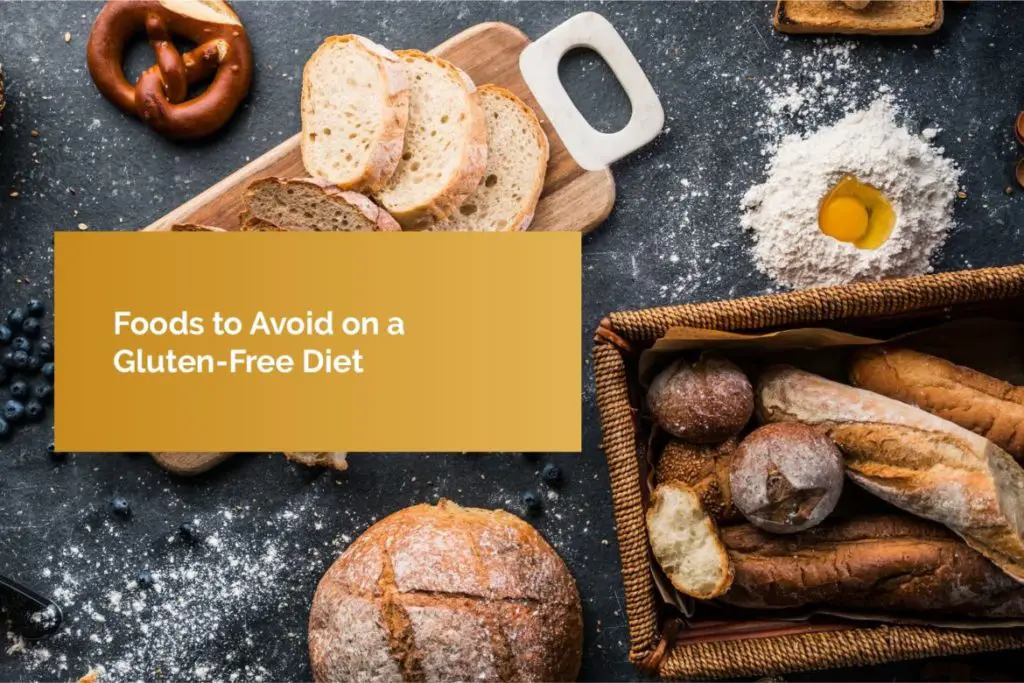Gluten Free Diet Benefits With Gluten Free Food List (Is bournvita gluten free?)
Jump To:

Avoiding gluten is a real challenge, but like every coin has two sides, a gluten-free diet comes with its pros and cons. But, it is important to test what suits you, whether you’re gluten intolerant or does your system function better without gluten. However, gluten symptoms vary from person to person. If you’re into it, millets are one of the best sources for a gluten-free diet giving you maximum health benefits and gluten-free diet benefits. Check more benefits of millets and recipes. Also, the pegan diet emphasizes whole foods, especially vegetables, while largely prohibiting gluten, dairy, most grains, and legumes.
Gluten-Free Diet Benefits:
However, highlighted here are some of the pros of following this type of diet:
- Studies have shown that following a diet with no gluten can relieve digestive symptoms, which may include bloating, gas, fatigue, and constipation.
- A gluten-free diet reduces chronic inflammation and especially helps those with celiac disease.
- Follow this diet if you want to boost your energy levels and get rid of iron deficiency.
- This diet eliminates junk food and processed foods but includes healthy fruits and vegetables; it helps lose weight.
Gluten-Free Food List:

Here is some gluten-free food list of grains, starches, or flours that can be easily included while following a gluten-free diet:
- Flaxseeds
- Millet
- Buckwheat
- Corn
- Rice
- Soy
- Teff
- Sorghum
- Amaranth
- Таріоса
- Arrowroot
- Hominy
- Quinoa
- Potato
There are many questions like rice gluten-free, oats gluten-free, etc. Here is the gluten-free diet plan with all the safe foods included.
- Cereals: rice, Makki atta, tapioca, sago, bajra, jowar, singhara atta, kuttu atta, arrowroot
- Pulses: all dals
- Processed cereals: chirwa, murmur, rice flakes, cornflakes, puffed rice, popcorn, rice noodles, rice papad, sago papad
- Snacks: idli, dosa, vada, potato cutlet, roasted corn
- Desserts: Freshly prepared rice kheer, sago kheer, fresh Paneer, caramel custard, carrot halwa
- Beverages: Fresh juices, milk, and its products, fresh soups without cornstarch
- Fresh foods: Freshly cooked vegetables, fresh fruits, fats and oils, whole/ground spices and condiments, freshly cooked meat, fish, chicken, egg.
Gluten Foods To Avoid:

Celiac disease is a majorly occurring disease with gluten intolerance. A gluten-free diet is very difficult because gluten is not just in our atta. Special care has to be taken to keep away gluten completely. Here are the gluten foods to avoid. This list is also a celiac disease diet food to avoid.
- All supplements contain gluten since wheat starch is a binding agent in tablets and capsules.
- Cosmetics: since gluten can be found in products such as lipstick.
- Gluten is found in grain alcohols such as beer and malted liquors.
- Atta, Maida, sooji, rye barley, Dalia, and their products has gluten.
- Noodles, pasta, bread, bread rolls, pizzas, wheat flakes, soup sticks, seviyan, rusk, cake also has gluten.
- Burger, kulcha, naan, upma, crackers, biscuits, cutlets, and other wheat products.
- Barley water, hot chocolate, Complan, Horlicks, Boost, Bournvita, soups made of soup cubes or soup powder.
- Tinned and canned foods, sauces, instant curry mixes, baked beans.
- Sausages, hams, seekh kebab, tikka.
Tips To Help You Follow A Gluten-Free Diet:
It should be known that following a gluten-free diet is not pocket-friendly at all, as most of the gluten-free products are expensive, and not everyone can afford them easily.
- Always read the label at the back of every food product to help you avoid certain ingredients that are not part of a gluten-free diet.
- Inform your friends that you are following a specific type of diet so that they may choose places to dine out where you too can enjoy the food as much as they do. Their teasing may also make you more determined to stick to your diet.
- Plan ahead of time if you are about to travel or go on a trip. Do some research about the places where you can eat and hunt for places that offer readily available gluten-free foods to help make your health journey a bit easier and enjoyable!
- Start using separate cooking utensils to prepare your gluten-free foods to avoid cross-contact with gluten-containing foods.
Though most people can consume foods that contain gluten without any harmful or adverse effects, if you are about to follow a gluten-free diet, it is advisable to choose plenty of healthy and delicious natural, gluten-free foods. Also, always add plenty of whole foods, single-ingredient foods, and lean protein sources to your diet. This will avoid any risks and will not only keep your stomach happy but will also help you lead a healthy lifestyle.
What can you eat on gluten-free diet?
Many naturally gluten-free foods can be a part of a healthy diet: Fruits and vegetables. Beans, seeds, legumes, and nuts in their natural, unprocessed forms. Eggs. Lean, nonprocessed meats, fish, and poultry. Most low-fat dairy products.
Do potatoes have gluten?
Potatoes in their raw form do not contain any gluten and are therefore perfectly suitable for Coeliacs and anyone with special dietary needs. What you do need to be careful about is how they are prepared as any additional ingredients used could contain gluten, providing a ‘back door’ for gluten.
What are gluten foods?
Gluten may be found in a variety of whole and processed foods, including
Grains: whole wheat, wheat bran, barley, rye, triticale, spelt, kamut, couscous, farro, semolina, bulgur, farina, einkorn, durum, wheat germ, cracked wheat, matzo, mir (a cross between wheat and rye)
Is a gluten-free diet healthy?
Beyond this, there’s little evidence that a gluten-free diet offers any particular health benefits. However, a gluten-free diet can still be a healthy way to eat depending on which gluten-free foods you choose, how often you eat them, and whether your other food choices are healthy ones.
Are bananas gluten-free?
Bananas (in their natural form) are 100% gluten-free. If you experience issues with eating bananas it may be because of a couple of proteins present in bananas – Marlow over at glutenhatesme.com has an excellent and detailed post on this issue so please head on over to her blog to read more.
Do eggs have gluten?
In their natural state, in the shell, eggs are completely free of gluten as are most of the further processed egg ingredients, such as liquid whole eggs, egg yolks, and egg whites.
Is bacon a gluten?
Is Bacon Gluten-Free? While plain bacon is naturally gluten-free, some brands may contain flavorings or additives with gluten. Plain bacon is made from pork belly, spices, sugar, and nitrates.
Is peanut butter gluten-free?
It’s important to know that peanuts, peanut butter, peanut flour, and peanut oil are considered naturally gluten-free foods. Gluten is a form of protein found in wheat, barley, and rye (2).
Does milk have gluten?
No, milk does not have gluten. Whether you choose whole, low-fat, or lactose-free cow’s milk, it is gluten-free.
What is a gluten belly?
The damage created by gluten in the intestines results in a condition known as a “leaky gut”. This is very common and removing gluten from the diet is usually not enough to restore the integrity to the intestine.
Is Rice a gluten?
Does Rice Have Gluten? All natural forms of rice — white, brown, or wild — are gluten-free. Natural rice is a great option for people who are sensitive to or allergic to gluten, a protein usually found in wheat, barley, and rye, and for people who have celiac disease, an autoimmune disease triggered by gluten.
What are the worst foods for gluten?
If you have a gluten intolerance, avoid the following: white bread. whole wheat bread. potato bread. rye bread. sourdough bread. wheat crackers. whole wheat wraps. flour tortillas.
What happens to your body when you first go gluten-free?
If you are going gluten free because you have been diagnosed with celiac disease, then you may feel relief of symptoms including GI issues, weight loss, improved nutrient absorption, a decrease in aches and pains and headaches, and increased energy.
What are the side effects of eating gluten-free?
4 risks to a gluten free diet
- Lack of fiber. America, as a whole, has a fiber problem.
- Increased type 2 diabetes risk.
- Lack of essential vitamins and nutrients.
- Weight gain.
What are the side effects of gluten?
People may experience the following symptoms for several hours or days after they consume gluten:
Abdominal pain. Anemia. Anxiety. Bloating or gas. Brain fog, or trouble concentrating. Depression. Diarrhea or constipation. Fatigue.